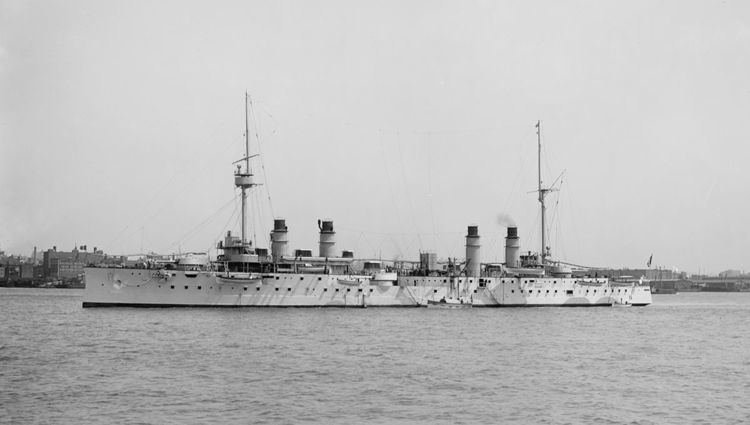Name Dupleix class Preceded by Gueydon class Built 1897–1904 | Operators French Navy Succeeded by Gloire class In commission 1904–1921 | |
 | ||
The Dupleix-class cruisers were a group of three armoured cruisers built for the French Navy at the beginning of the 20th century. All three ships served in World War I.
Contents
Design and description
Designed by the naval architect Emile Bertin, the Dupleix-class ships measured 132.1 meters (433 ft 5 in) long overall with a beam of 17.9 meters (58 ft 9 in) and had a maximum draft (ship) of 7.4 meters (24 ft 3 in). They displaced 7,735 metric tons (7,613 long tons). They had a crew of 531 or 580 officers and enlisted men.
The ships had three vertical triple-expansion steam engines, each driving a single propeller shaft. Steam for the engines was provided by 20 or 24 boilers and they were rated at a total of 17,500–17,800 indicated horsepower (13,000–13,300 kW) that gave them a speed of 20.7–21 knots (38.3–38.9 km/h; 23.8–24.2 mph). The Dupleix-class ships carried up to 1,180 metric tons (1,160 long tons; 1,300 short tons) of coal and could steam for 7,600 nautical miles (14,100 km; 8,700 mi) at a speed of 10 knots (19 km/h; 12 mph).
The ships of the Dupleix class had a main armament that consisted of eight quick-firing (QF) 45-caliber Canon de 164 mm Modèle 1893-96 guns. They were mounted in four twin gun turrets, one each fore and aft of the superstructure and a pair of wing turrets amidships. For anti-torpedo boat defense, they carried four 45-caliber QF 100-millimeter (3.9 in) guns on the forecastle deck, ten QF 47-millimeter (1.9 in) Hotchkiss guns. They were also armed with two above water 450-millimeter (17.7 in) torpedo tubes.
The Harvey armor belt of the Dupleix-class cruisers extended from 1.2 meters (4 ft) below the waterline to 2.1 meters (6 ft 10 in) above it and to a height of 2.4 meters (8 ft) at the bow. It covered the entire length of the ship except for 18.9 meters (62 ft) of the stern where it ended in a transverse bulkhead 91 millimeters (3.6 in) thick. The armor was generally 102 millimeters (4.0 in) thick, although it reduced to 84 millimeters (3.3 in) forward, and thinned to 38 millimeters (1.5 in) at its lower edge.
The curved protective deck ranged in thickness from 71 to 41 millimeters (2.8 to 1.6 in). A watertight internal cofferdam, filled with cellulose, was mostly unprotected by the side armor. The gun turrets were protected by 4.7–6.3-inch (120–160 mm) armor and the armor of their bases was 38–119 millimeters (1.5–4.7 in) thick. The 100-millimeter guns were in unprotected hull embrasures on the upper deck. The sides of the conning tower were 81 millimeters (3.2 in) thick.
